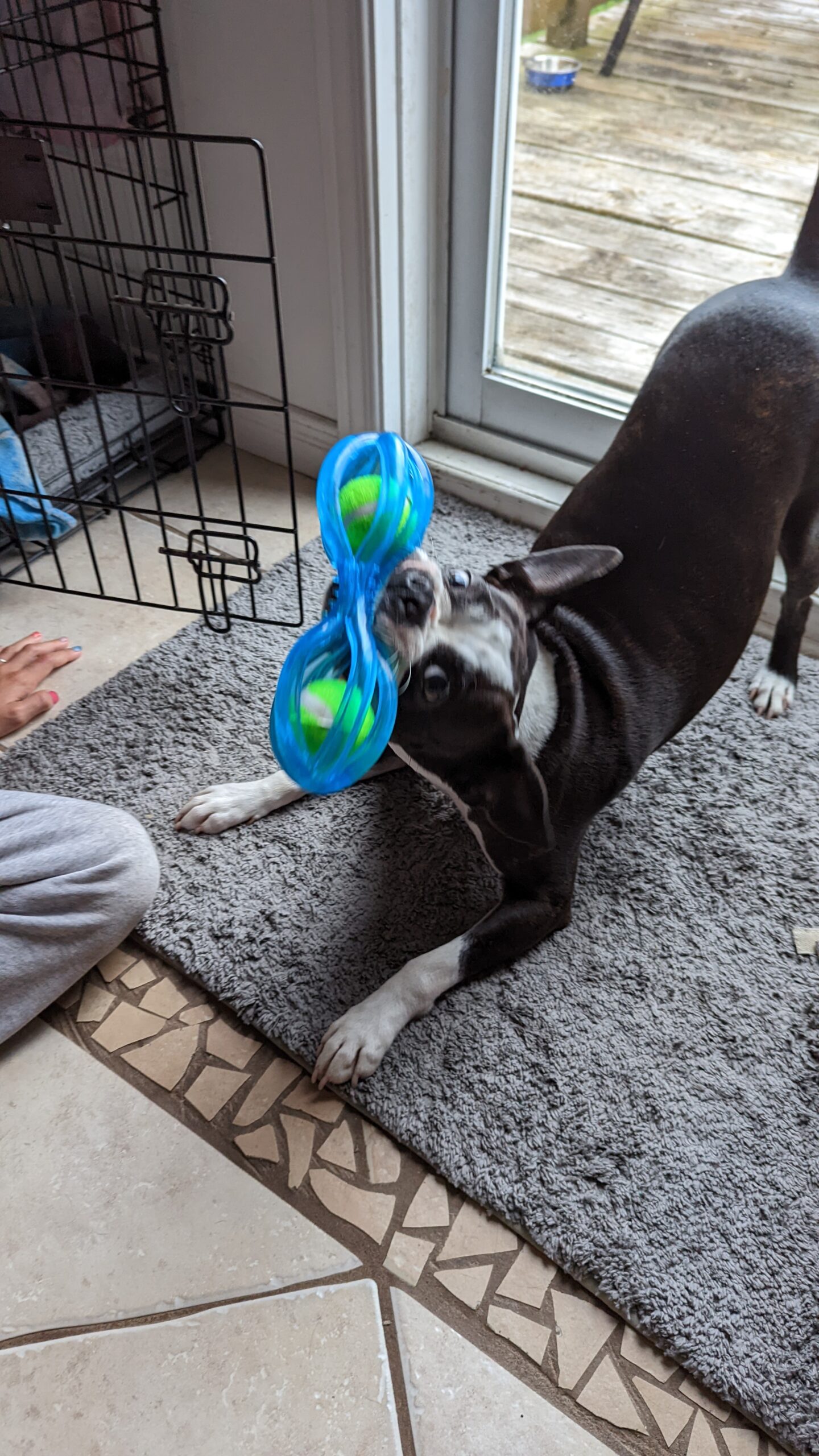A dog that bites can be dangerous and frightening, both for pet owners and the general public. How to stop a dog biting is therefore key to a happy life with your Boston Terrier. Don’t get me wrong though, Boston Terriers are NOT on the list of the 10 most dangerous dogs!
If needed, here is a list of chewing toys we recommend—-> Review of chewing toys
10 tips to train stop a dog biting
Here are steps to prevent your dog from biting and training it in the right way.
Identify why your dog is biting: There can be many reasons why dogs bite, such as fear or aggression. Identifying the underlying cause of the behavior will go a long way in helping you figure out how to stop it.
Find what can bother your Boston Terrier——->Boston Terriers Health Problems
Prevent access to triggers: Make sure that your pet does not have access to situations or people that may be triggering unwanted behavior. Reduce exposure to situations where your pet may become fear-aggressive or overly excited leading them to bite.
Pretty easy so far…
Teach calm behavior: Reinforce behaviors like sitting and lying down with treats or toys when your pup’s energy level is low (not when they are hyped up). This helps your pup learn that being calm is more rewarding than getting excitable or aggressive.
Ensure proper socialization: Proper socialization will help familiarize dogs with new situations, environments, and people so they are less likely to act aggressively when they encounter something unknown. Socialize puppies as early as possible by introducing them to new sounds, experiences, smells and objects at home. Bring your pooch to puppy classes in order to develop confidence in new settings later on in life.
Eliminate punishment techniques: Instead of punishing a pup for growling or snapping at another person or dog, redirect the pup’s attention toward an appropriate activity. For instance, playing with a toy or getting treats when meeting new people instead of reacting aggressively towards them instead.
Practice obedience training: Obedience training should begin at an early age for all puppies. They will understand what is expected of them within their environment. Commands like “sit” and “stay” should be taught alongside gentle corrections if needed as this will help establish boundaries. Teach permissible behavior and unacceptable ones like biting too hard or barking excessively at strangers and other dogs alike.
Use clicker training methods: Clicker training offers a positive reinforcement method for teaching basic commands to dogs. Not using physical force or punishment-based tactics won’t to lead further anxiety and aggressive behavior down the road. If it’s not managed properly on time through rewards rather than correction techniques, that could backfire!
Find affordable clickers at Canadian Pet Connection 
What else?
Reward good behavior immediately : Whenever you see good behavior such as obedience , reward it quickly by providing praise , treats , affection etc . This reinforces what was desired from him/her & strengthens their trust in you. It builds a better bond between you two while discouraging any form of bad habits & disruptive actions like biting .
Bring others around regularly: Bringing different people around who have varying levels of familiarity (family members , friends , neighbors) helps acclimate the pup with different types of humans. It is essential for reducing any aggression due to fear over time . It’s best done gradually so as not overwhelm them & take small breaks regularly during this process just in case things start going south !
Familiarize yourself with dangerous breeds: Studying up on some breeds known for being more prone towards aggressive tendencies / capable of inflicting serious harm can give you an idea about taking extra precautions & devising special methods tailored specifically towards those pups when dealing w/them directly . Keeping yourself informed about certain breeds’ particular traits & behavioral patterns gives you advantage when trying protect those around them from getting hurt !
What about Ivar?
We might have been lucky or we have trained our Ivar well I’m guessing. Maybe a little of both but he’s amazing and has never bitten anyone. Altough they are usually very calm and non agressive dogs, Boston Terriers are still potentially dangerous.
Conclusion
All breeds require proper training but some require much stricter rules than others. Especially if they belong one amongst list of 10 most dangerous dogs out there ! By following these tips carefully , hopefully we’ll find ourselves heading off potential disasters. Establishing control over our pets’ actions within our given environment before incidents occur will help prevent any future unfortunate circumstances.
Thanks again for reading me and please, comment in the section below!
J-F

